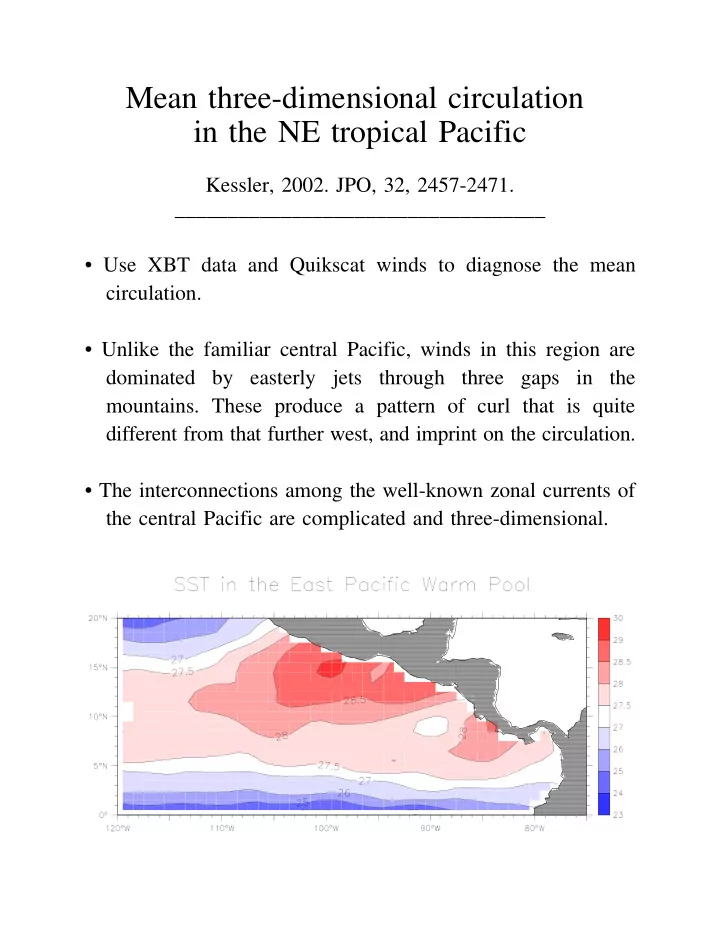

Mean three-dimensional circulation in the NE tropical Pacific Kessler, 2002. JPO, 32, 2457-2471. ___________________________________ • Use XBT data and Quikscat winds to diagnose the mean circulation. • Unlike the familiar central Pacific, winds in this region are dominated by easterly jets through three gaps in the mountains. These produce a pattern of curl that is quite different from that further west, and imprint on the circulation. • The interconnections among the well-known zonal currents of the central Pacific are complicated and three-dimensional.
Dynamics Assume steady linear flow in Sverdrup balance: Decomposing the meridional velocity into Ekman and geostrophic parts, and noting that , allows rewriting the Sverdrup balance as The geostrophic term on the left can be evaluated from the observed ocean data, and the term on the right from the observed winds. The stretching of water columns due to meridional motion is balanced by the stretching due to Ekman pumping . An indefinite integral, using the observed v from the XBT data, gives g the vertical profile
1
Conclude: 1. The Sverdrup Balance explains important features of the mean circulation in the NE tropical Pacific. 2. Positive curl due to the Papagayo wind jet forces upwelling amounting to about 3+ Sv through 17°C. Consequences of this upwelling include: � A relatively cool region (SST about 1°C cooler than surrounding areas) is due to the upwelling. � Stretching of the water column forces the northern Tsuchiya Jet to turn poleward and upwell. 3. Downwelling curl SW of Tehuantepec produces a dip in the 10°N thermocline ridge and weakens the NECC near 110°W. 4. The imprint of the unusual wind system of the NE tropical Pacific on the ocean may turn out to be an aspect of the path by which intermediate-depth water, flowing into the Pacific from the south, is brought to the surface and into the northern hemisphere. All figures from this talk are available at: http://www.pmel.noaa.gov/~kessler/ � Latest talk
Extra slides .....
Recommend
More recommend